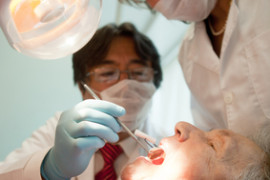A recent research paper came out in the September 2013 edition of the Australian Dental Journal on the effects of non-surgical periodontal treatment on blood glucose levels in patients with Type 2 diabetes. The conclusion of this research paper stated that non-surgical periodontal treatment was associated with a reduction in blood glucose levels.
One of the biggest health concerns in our society is Type 2 diabetes and the complications that come from that disease. Diabetes not only costs the individual an enormous monetary amount on healthcare expenses, but it is also one of the biggest life disruptors in our society. And with the current obesity epidemic, “diabesity” is becoming an ever-pressing concern:
“By some estimates, the total number of individuals with obesity-induced diabetes will escalate to 366 million worldwide by 2030, with an 8-10 year reduction in their life expectancy.”
In an effort to further explore the relationship between periodontal disease and diabetes, researchers in Japan set out to determine the molecular origins of this relationship.
Their report, which was published in Biochimica et Biophysica Acta, details the manner in which oral pathogen P. gingivalis—already known for its ability to selectively disarm the immune system—can translocate to the liver and subsequently affect the process of glycogenesis. This, in turn, affects the liver’s regulation of glucose, potentially contributing to the progression of diabetes.
Furthermore, the study also noted that high glucose levels increase the effects of P. gingivalis in the liver.
It’s been well established that periodontal disease and diabetes are bi-directionally related—particularly when it comes to the inflammatory cascade that often accompanies both conditions. We already know that addressing oral inflammation is key in reducing both costs and complications of care for diabetic patients. And by examining this bi-directional relationship on an entirely new level, this most recent study tells us specifically why this might be so.



